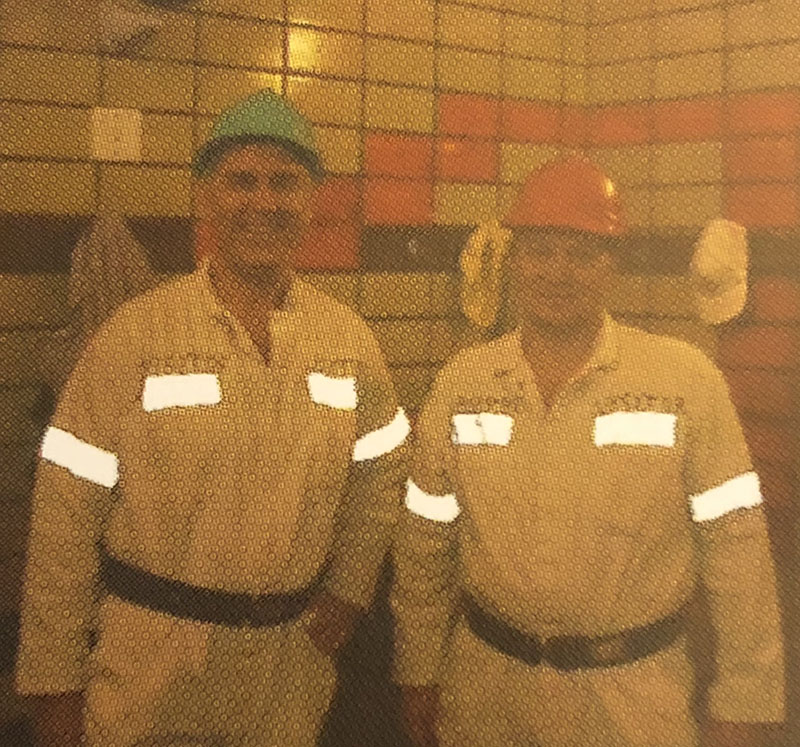Employee engagement hasn’t improved in 20 years—and Gallup says managers are the reason. Learn why corporate programs fail and what actually moves the needle.
Conducting Stay Interviews in African Gold Mines Eliminates All Excuses

Several years ago, AngloGold Ashanti invited me to help them lower their turnover rates in African gold mines…for jobs a full four kilometers underground. That’s 2.5 miles straight into the earth. 60 Minutes ran a report last year about these mines, and the mine I was in is officially known as the deepest man-made hole on earth. You can see a YouTube video about that mine here: https://miningglobal.com/digital-mining/photos-5-most-staggering-facts-about-mponeng-gold-mine
I just watched it and the chills of wonderment all came back.
AngloGold Ashanti’s turnover situation was just like many of ours. Too few workers available, the jobs had their shortcomings, and their workers didn’t stay. What can we do, the executives asked, to keep them? To improve employee retention, employee engagement, and overall employee satisfaction?
The hitch was I had to descend the full 4K in order to observe these employees doing their jobs. Normally I require observing workers in high-turnover jobs anyhow, and from the states this seemed like a keen idea.
Upon arriving in Johannesburg and being driven to my high security hotel, I had dinner with the Anglo executives. After toasting with fine wine, one of them said the following, in an accent I will take to my grave:
“As you know, we are scheduled to pick you up at 5:30 AM tomorrow for your day in the mine. We are scheduled for the Tautona mine but unfortunately today we had a seismic event and five of our workers were crushed, so I suggest we go to the Mponeng mine instead. Wouldn’t you agree?”
The first thing I did was drink more wine. And then I nodded my agreement.
My day in the mine was fascinating and frightening. After donning safety equipment, the world’s longest elevator took me and 120 workers straight down, 40 miles per hour, as my ears did funny things. Hitting bottom, we were introduced to a mini city with bright lights, training rooms, and narrow railroad tracks. No eating was permitted underground at all, despite the 10-hour shifts. The workers, I had learned, stayed in high-density dorms with up to 12 beds in a room where the most frugal of them stayed so they could send more money home to their families who lived in other parts of Africa.
The critical moment came late in the day when I was asked to strap on knee pads. From there we climbed down a steep walkway with help from a rope handrail and the crawled through narrow passageways to an inside room where workers chipped away at hard rock. For several minutes the only lighting came from our helmets, and I was instructed to not lose sight of the person in front of me. I had never felt claustrophobic until then. Worse, when we arrived in that brightly lit room we were advised to watch for a few minutes before leaving so the workers could dynamite that area. The subsequent boom reminded me of the “seismic event” from the day before, though this event was intentional. Did anyone die?
But describing this rarest of work settings can distract us from the reason for my middle-earth plunge. Could I help AngloGold Ashanti cut employee turnover?
The ultimate answer was yes, I helped AngloGold Ashanti’s turnover fall. Important for us today, though, were the extreme challenges those supervisors faced to conduct supervisory training and Stay Interviews underground, facing those same challenges other companies face resulting in the usual litany of excuses: no time for Stay Interviews, cannot pull hourly workers off their jobs, we have no private locations for one-on-one sessions, and the rest. Except Anglo faced these challenges times 10 versus regular, above-earth companies…and solved each one.
How Anglo solved cordoning-off private Stay Interview areas, allotting time for supervisors and workers to conduct them and more is not important now. But what is important is that they did, that they committed themselves to the concept of Stay Interviews, confronted inconveniences the likes of which they had not confronted before, and overcame them. Those executives’ wills to cut turnover crushed all obstacles in their way.
This story comes to mind when any executive…HR or Operations…says asking leaders on all levels to meet with their individual team members for 20 minutes will cause too much angst, too much pushback because leaders already have too many meetings or employees can’t be pulled off their jobs. I respond by asking, politely, if finding ways to solve this are worth the trade-off of reducing their turnover rates by 30% and more.
What do you think?
Dick Finnegan is SHRM’s top-selling author and top-rated webcast presenter. Please email your comments to DFinnegan@C-SuiteAnalytics.com. You are also welcome to forward this blog to anyone you believe would find it helpful.




